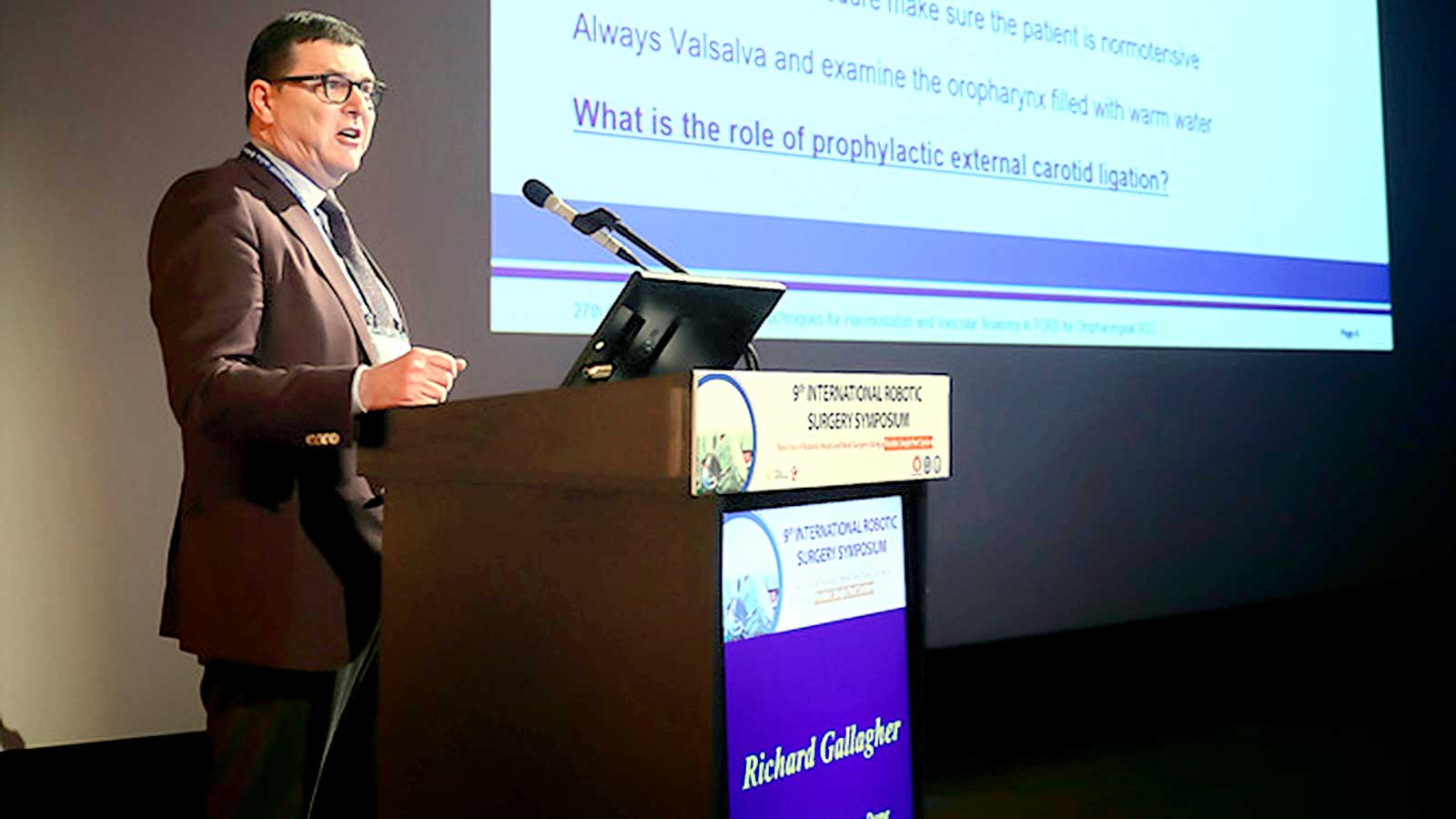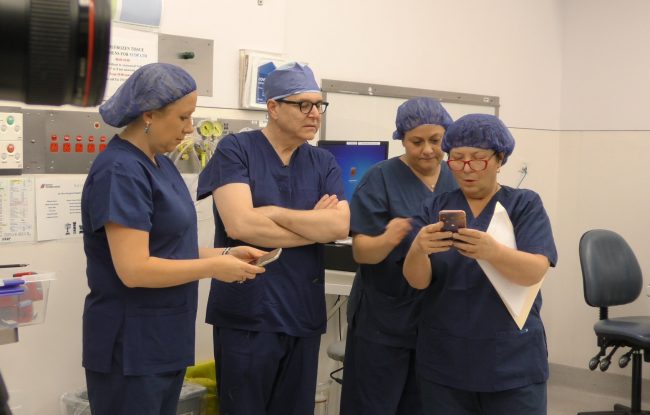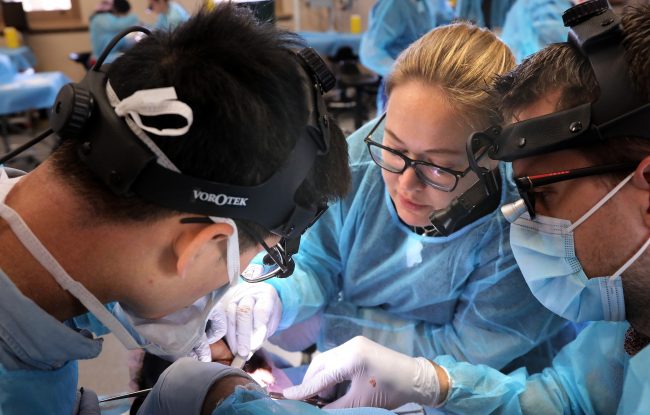I have just returned from the 9th International Robotic Surgery Symposium (IRSS) in Seoul, Korea. This is the fourth in a series of five blog posts:
- Neoadjuvant immunotherapy and transoral robotic surgery (TORS)
- Obstacles to improving treatment regimens in head and neck cancer
- Scarless surgery – the future of thyroid surgery is robotic
- Controlling postoperative bleeding – my IRSS paper
- Future of surgical robots – single ports and flexible endoscopes
My own presentation at the IRSS conference was in a section of the meeting titled TORS for Oropharyngeal Cancer and Unknown Primary. My talk was titled, Techniques for Haemostasis and Vascular Anatomy in TORS for Oropharyngeal SCC.
A quick translation – how to prevent and manage intraoperative and postoperative bleeding after transoral robotic surgery for oropharyngeal squamous cell carcinoma.
Postoperative bleeding can be a serious complication of any surgery. Oropharyngeal surgery presents particular challenges because of the major arteries which are exposed. The causes for postoperative bleeding are multifactorial and often include anticoagulation, tumour size and consequently the volume of tissue resected (more resection means a bigger wound), surgeon experience and surgical volume. The key to overcoming the problem almost certainly lies within the quality of the surgeon’s training and their knowledge of the anatomy.
To date I have performed 280 transoral robotic surgeries, 177 of which were for oropharyngeal squamous cell carcinomas (OPSCC). My secondary haemorrhage rate is 4%. Six bleeds came from the tongue base. In most cases the patients were returned to the operating room and bleeding was controlled using a Lindholm laryngoscope for access and either cautery or clips for the bleeding.
My key messages for TORS surgeons is prevention is key:
- In tonsillar dissection, work methodically to identify the named vascular structures
- In the tongue base always find the main trunk of the lingual artery
In other words, understand the anatomy, understand the anatomy, understand the anatomy. I occasionally hear on the Australian surgical grapevine about early career TORS surgeons who have difficulty managing operative and postoperative bleeding. The importance of the surgeon’s personal experience with conventional approaches, plus an expert knowledge of anatomy, are two of the main reasons behind my belief that surgeons should not commence robotic training until they already have advanced surgical head and neck training.
I would like to thank Professor Se-Heon Kim, The Korean Society of Head and Neck Surgery, and Yonsei University College of Medicine for inviting me to join the faculty of the 9th International Robotic Surgery Symposium, held in Seoul, Korea, October 25-27, 2019 http://8thirssyonsei.thewithin.kr/register/2019/main.html



